This 84th Episode of CS is titled Lost & is a brief review of The Church in the East.
I encourage you to go back and listen again to episode 72 – Meanwhile Back in the East, which conveyed a lot of detail about the Eastern Church & how it fared under the Mongols and Muslim Expansion in the Middle Ages.
Until that time, Christianity was widespread across a good part of the Middle East, Mesopotamia, Persia, & across Central Asia – reaching all the way to China. The reaction of Muslim rulers to the incipient Mongol affiliation with Christianity meant a systemic persecution of believers in Muslim lands, especially in Egypt, where Christians were regarded as a 5th Column. Then, when the Mongols embraced Islam, entire regions of Christians were eradicated.
Still, even with these deprivations, Christianity continued to live on in vast portions of across the East.
Let me insert a verbal footnote at this point. Much of what follows comes form the work of Philip Jenkins, whose book The Lost History of Christianity is a stellar review of the Church of the East. I heartily recommend it to all you hardcore history fans.
Consider this . . .
The news recently reported the attacks by ISIS on Assyrian Christians in Northern Iraq. This is a reprise of 1933, when Muslim forces in the new nation of Iraq launched assaults on Nestorian & Assyrians, in what had once been the Christian heartland of northern Mesopotamia. But now, government-sponsored militias cleansed most of the area of its Assyrian population, killing thousands, and eliminating dozens of villages.
Although the atrocities weren’t new, the arrival of modern media meant they reached the attention of the world, raising demands for Western intervention.
These anti-Christian purges were shocked many & elicited a new legal vocabulary. Within months, the Jewish lawyer Raphael Lemkin referred to the Assyrians & Christian Armenians before them, to argue for a new legal category called crimes of barbarity, meaning “acts of extermination directed against the ethnic, religious or social collectivities whatever the motive; be it political or religious.” In 1943, Lemkin expanded this idea and coined a new word for such abhorrent behavior—Genocide.
Yes = The modern concept of genocide as a horror calling for international sanctions has its roots in successful movements to eradicate Middle Eastern Christians.
I mention this less than century old genocidal campaign against Assyrian Christians because we may tend to assume the Middle East has ALWAYS been dominated by Islam, or at least, it has since the 7th C. What we ought to understand instead is that it was only in the last Century that the Middle East wasn’t understood as a home to a significant popular of Christians. Take ANY Middle Eastern person out of the 18th C and plant them in the Middle East of today and they would be stunned by the paucity of Christian presence.
Until a century ago, the Middle East was a bewildering quilt of religious diversity in which Christians were a familiar part of the social and cultural landscape. Particularly startling for our time traveler would be modern-day Turkey as a Muslim land.
Historically speaking, until very recently, Christians were as familiar a part of the Middle Eastern scene as Jews are in the United States, or Muslims are in Western Europe. At the dawn of the 20th C, Christians of the Middle East were about 11% of the population while American Jews are only about 2%!
The destruction of the Middle Eastern Christian community is an historic transformation of the region.
The decline of Christianity in the Near East occurred in two distinct phases.
The first occurred during the Middle Ages and largely as a result of the Crusades. But even then, Christians suffered more or less regionally. The Syriac Church was virtually annihilated while the Egyptian Copts held their own. Reduced to a minority status, they entrenched & proved durable.
But the second phase of hostility against Christians began about a century ago with the advent of a new & virulent form of Islamism. Now Christians are being systematically eradicated; either by aggressive assimilation or outright persecution. The 20th C saw the emergence of a form of Islam intolerant of any other faith.
The Ottoman Turks began as a rather small power in Asia Minor. After the Mongol invasions destroyed the Seljuks, the Ottomans used the wars that followed to create a power base in Asia Minor. They gradually spread over what had been the Christian Byzantine Empire. By the time they took Constantinople, the Ottoman Empire included the Balkans, and by 1500 they controlled the Black Sea. By 1520 they ruled most of the Muslim world west of Persia, as far as Algiers, and became the main enemy for European Christians. Their European conquests advanced rapidly through the 16th C under such Selim I & Suleiman the Magnificent. In 1526, the Turks conquered Hungary, destroying what was at that time a major European power. Turkish advances weren’t reversed until the their loss at Vienna in 1683.
Selim I took the title of caliph, and took his role as head of Islam seriously. He ordered the confiscation of all churches, many of which were razed, and Ottoman authorities forced thousands of conversions. A century later, the sultan Ibrahim planned the total extermination of Christians. From the 15th C onward, the pressure to convert to Islam was massive. Throughout Christian territories held vassal by the Turks was levied the “tribute of children” by which Christian families had to give a number of their sons to be raised by the state as slaves, or as elite soldiers, called Janissaries. These janissaries became some of the most feared warriors in the Sultan’s army against the Europeans.
Ottoman warfare was extremely destructive because it drew on methods stemming from the Turkish heritage of Central Asia. Ottoman forces massacred entire Christian populations, targeting clergy and leaders. In 1480, the Turks destroyed the Italian city of Otranto, killing 12,000 and executing priests by sawing them in half. The destruction of Nicosia in Cyprus in 1570 was a crucial loss to Europe. Accounts of Ottoman warfare and punishment include such gruesome techniques as impaling, crucifixion, and flaying. When a Christian leader in Wallachia, named Vlad decided to use these very same tactics against the Turks, it gave rise to the legend of Dracula.
From the 15th thru the 19th Cs, the Turks ruled over a large Christian population on European soil. They called Christians rayah, “the herd,” and treated them as animals to be sheared and exploited. A Bosnian Muslim song says >> “The rayah is like the grass; Mow it as much as you will till it springs up anew.”
Though pressure to convert was strong, Christianity survived, and managed to recover in a few places like Greece & Bulgaria. But the Eastern Orthodox Church now followed the way of their earlier cousins, the Nestorian and Jacobite Churches & passed under Muslim rule.
As the Near East fell under the control of Islamic states, Western European nations had an ever-greater incentive to find alternative trade routes. This they did by exploiting the seas. Well into the 15th C, explorers dreamed of linking up with the fabled Prester John, and renewing the alliance against Islam. In the mid–15th C, the Portuguese explored the Atlantic & shores of Africa. By the 17th C, Europeans were well on their way to global domination. Rising economic power led to urbanization, and the share of the world’s population living in Europe and in European overseas colonies grew dramatically. Demographic expansion vastly increased the relative power of European Christianity.
Expanding commercial horizons brought Europe’s churches into contact with the tattered shreds of the ancient Eastern Christian groups. Tensions between European and non-European churches were of ancient origin. As early as 1300, Catholic missions in China had met sharp opposition from Nestorians, who naturally saw the newcomers making inroads on their ancient territories. Now, however, the Latin powers were far stronger than before, and better able to enforce their will. During the great period of Spanish and Portuguese empire building from the mid-16th to 17th C, the leading edge of Christian expansion was the Roman Catholic Church, fortified by the militancy of the Counter-Reformation. As Catholic clergy and missionaries roamed the world, they found the remnants of many ancient churches, which they determined to bring under papal control.
So long-standing was the separation of Western and Eastern churches that the 2 sides never stood much chance of an alliance. As Christianity fell to such dire straits outside Europe, Catholics dismissed foreign traditions as marginal or even unchristian. After the fall of Constantinople, Pope Pius II wrote to the victorious sultan, effectively denying that the non-Catholic churches were Christian in any worthwhile sense: they were “all tainted with error, despite their worship of Christ.” He more or less explicitly asserted the identity of Christianity with the Catholic tradition and, even more, with Europe itself.
As Western Christians traveled the world, many were skeptical about the credentials of other churches. In 1723, a French Jesuit reported that “the Copts in Egypt are a strange people far removed from the kingdom of God…although they say they are Christians they are such only in name and appearance. Indeed many of them are so odd that outside of their physical form scarcely anything human can be detected in them.”
Latins were troubled by the pretensions of these threadbare Christians, who nevertheless claimed such grand titles. In 1550, a Portuguese traveler reported that the 40,000 Christians along the Indian coast owed their allegiance to a head in “Babylon,” someone they called the “catholicos.” Bafflingly, they had not so much as heard of a pope at Rome. Some years later, envoys dispatched by the Vatican were appalled to discover India’s Nestorians called “the Patriarch of Babylon the universal pastor and head of the Catholic Church,” a title that in their view belonged exclusively to the Roman pontiff.
For the first time, many Asian and African churches now found themselves under a European-based regime, and were forced to adjust their patterns of organization and worship accordingly.
Around the world, we see similar attempts at harmonization. From the 1550s, factions in the Nestorian church sought Roman support, and much of the church accepted Roman rule under a new patriarch of the Chaldeans. Like other Eastern churches, the Catholic Chaldeans retained many of their customs and their own liturgy, but this compromise was not enough to draw in other Nestorians who maintained their existence as a separate church. The Jacobites split on similar lines, with an independent church remaining apart from the Catholic Syrians.
The most controversial moment in this process of assimilation occurred in 1599, when Catholic authorities in southern India sought to absorb the ancient Syriac-founded churches of the region, the Thomas Christians. The main activist was Aleixo de Menezes, archbishop of the Portuguese colony of Goa, who maneuvered the Indian church into a union with Rome at a Synod in Diamper. In Indian Christian memory, de Menezes remains a villainous symbol of European imperialism, who began the speedy Romanization of the church, enforced by Goa’s notoriously active inquisition. The synod ordered the burning of books teaching Nestorian errors as well as texts teaching practices Europeans deemed superstitious. A substantial body of Syriac and Nestorian tradition perished. Many local Christians reacted against the new policy by forming separate churches, and in later years the Thomas Christians were deeply fragmented.
Yet despite this double pressure from Muslims and Catholics, Eastern Christian communities survived. At its height, the Ottoman Empire encompassed the Middle East, the Balkans, and North Africa, & in Europe included millions of subject Christians. Even in 1900, Muslims made up a little less than half the empire’s overall population.
This survival seems amazing when we think of the accumulated military catastrophes and defeats between 1300 and 1600, and the tyranny of sultans like Selim I. Yet for all these horrors, the Ottomans also found it in their interest to maintain a stable imperial order. After Sultan Mehmet II took Constantinople, he formally invested the new patriarch with his cross and staff, just as the Christian emperors had done previously. Christian numbers stabilized as the Ottomans granted them official status under a system dating back to the ancient Persians. They had their own patriarch who was both religious and civil head. This system endured into the 1920s.
Within limits, Christians often flourished, to the puzzlement of western Europeans, who could not understand the distinctive Ottoman mix of tolerance and persecution. Particularly baffling was the extensive use the empire made of non-Muslims, who were in so many other ways denied the most basic rights. Sultans regularly used Christians and former Christians as administrators, partly because such outsiders would be wholly dependent on the ruler’s pleasure: eight of the nine grand viziers of Suleiman the Magnificent were of Christian origin.
Making their life under the new order more acceptable, Christians actively proved their loyalty. Above all, Orthodox believers were not likely to work with foreign Catholic powers to subvert Turkish rule. The Orthodox found the Muslims no more obnoxious than the Catholic nations, whose activities in recent centuries had left horrendous memories. Apart from the Latin sack of Constantinople in 1204, later Catholic invaders like the Venetians had been almost as tyrannical to their Orthodox subjects as were the Turks. Even in the last days of the empire, a Byzantine official famously declared, “Better the Sultan’s turban than the Cardinal’s hat!” Matters deteriorated further when the Orthodox saw how Catholics treated members of their own church in eastern Europe.
By far the worst sufferers from the carnage of the 14th C were the old Eastern Syriac churches, precisely because they had once been so powerful and had posed a real danger to Muslim supremacy. Neither Jacobites nor Nestorians ever recovered from the time of Timur. If we combine all the different branches of these churches, we find barely half a million faithful by the early 20th C, scattered from Cyprus and Syria to Persia. This implosion led to a steep decline in morale and ambition. Instead of trying to convert the whole of Asia as they had originally envisioned and seemed within their grasp, the Syrian churches survived as inward-looking quasi-tribal bodies. Succession to the Nestorian patriarchate became hereditary, passing from uncle to nephew. Intellectual activity declined to nothing, at least in comparison with its glorious past. Most clergy were illiterate, and the church texts that do survive are imbued with superstition and folk magic.
Well …
That brings us now back to Europe and the monumental shift the Western Church had been moving toward for some time, as we’ve tracked over 8 episodes in our series, The Long Road to Reform.
We’ll pick it up there in our next episode.

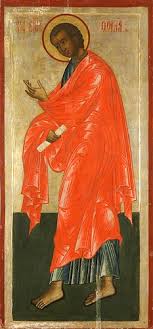
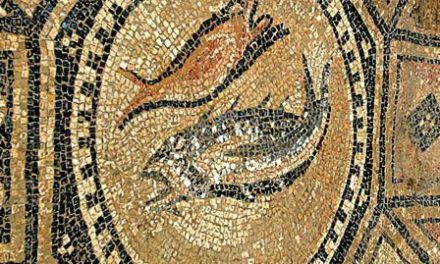
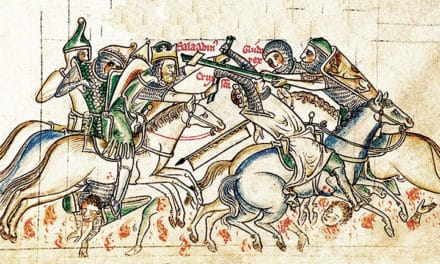
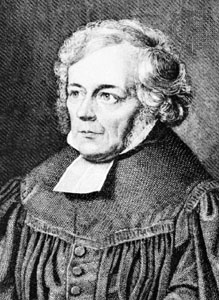
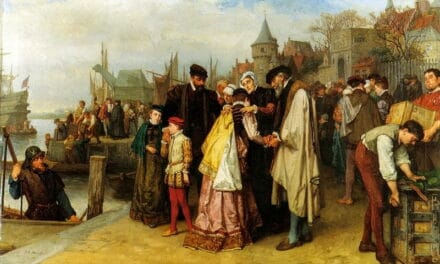
I am in the middle of reading Philip Jenkins’ “The Lost History of Christianity”. Thank you for the tip!